GAMA pushes EASA on GA electrification plus FAA update
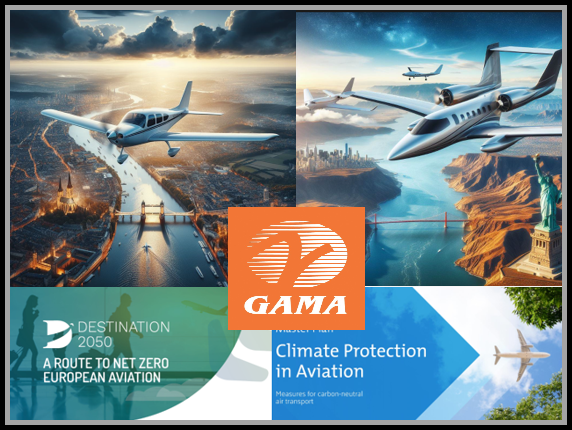
How is aviation doing in pursuit of its GREEN GOALS? What are the government/regulators defining as their paths to decarbonization. Fortunately, GAMA served a catalyst in adding some clarity in that significant environment target, by publishing its vision of what is needed (see immediate text highlighting an article from Australia (the full report is below) which reviews Europe’s status and a second section here summarizing the FAA’s statements/actions.
The General Aviation Manufacturers Association has earned a global reputation for being an EXTREMELY EFFECTIVE ADVOCATE ON TECHNICAL ISSUES relating to its 76 member companies. Below is an interesting article delving into the Association’s preparation and delivery of a 10 page white paper entitled—“Recommendations for Accelerating the Development of the Electric Aviation Sector in Europe.” What is remarkable is that the booklet is an exposition of what industry sees as essential to the expected development of electric aviation on the Continent.
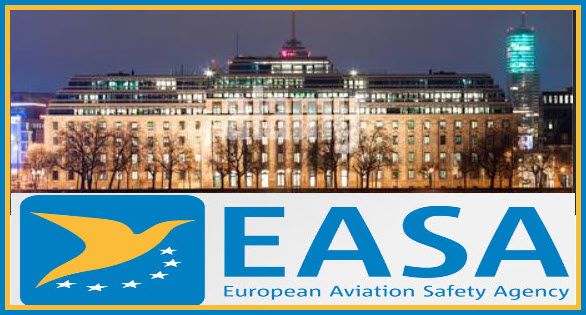
Here are a few of the policy points made by GAMA to support its requests (see below article) of EASA/EC/EU:
As various aviation roadmaps show, new technology will contribute to AS MUCH AS ONE THIRD OF THE DECARBONISATION needed to meet net zero emissions by 2050. Electric innovation is a case in point. Beyond the decarbonisation potential, the appeal of new electric propulsion systems also lies in their streamlined design, containing fewer moving parts and requiring less maintenance.
…
The basis of this new industry segment is a highly innovative technology – high-performance batteries – allowing for the development of a future market which will enable the EU to meet its strategic goal of reducing dependencies from third countries, developing technological leadership as well as export oriented economic growth, creating spill-over effects for other industries.
…
Bringing new aviation products to market typically takes 5-10 years or more. Return on Investment (ROI) calculations for investors therefore need to have a long-term outlook, especially with innovative new technologies. Creating the appropriate funding frameworks to support the success of electric aviation is also in the geopolitical interest of the EU as decarbonizing aviation will remain an imperative political and economic objective over coming decades, with intense competition from other countries around the world looking to attract innovative aviation manufacturing capabilities.
…
Ensuring stable supply chains for the strategic and (critical) raw materials necessary to support the European aviation sector writ large is crucial for creating business certainty and supporting the EU’s industry policy ambitions as electric aviation will be at the forefront of the global competition to deliver low-carbon mobility solutions. Electric battery systems for aviation propulsion require specific attention as these have several different specificities compared to, for example, automotive batteries. Due to its relatively small market share, it is particularly difficult for the aeronautics sector to secure its specific needs on the battery, semi-conductors, and raw materials markets in sufficient volumes. If remained unaddressed, such a lack of strategic autonomy is highly likely to hamper the European development and production at industrial scale of electric and hybrid aircraft.
…
EASA plays a pivotal role in developing the regulations and standards that will enable the safe integration of electric and hybrid propulsion aircraft into the aviation system as set out in the European Plan for Aviation Safety (EPAS). This includes, for example, the definition of new design and safety requirements for aircraft and propulsion systems, as well as the readaptation of requirements applicable to aerodromes, air traffic management, air navigation services, flight crew licensing or operations.
To undertake this work, significant resources are needed in terms of budget allocation and recruitment/retention of staff with the relevant expertise. EASA is primarily funded by fees & charges paid by industry applicants (59%) to cover costs associated with certification projects and approvals; as well as the EU subsidy (19%) to cover rulemaking, standardisation oversight and administrative costs.
The FAA has laid out a similar roadmap to a domestic electric aviation system. It begins with a broader carbonization objective called its United States Aviation Climate Action Plan. This paper outlines a whole-of-government approach to achieve net-zero emissions by 2050 in the U.S. aviation sector. Here are some of its specific tasks:
- Development of Efficient Aircraft and Engine Technologies.
- Aircraft Operations Improvements: Enhancing efficiency throughout the National Airspace System.
- Sustainable Aviation Fuels (SAF).
- Electrification and Hydrogen Solutions for Short-Haul Aviation.
- Advancements in Airport Operations: Implementing sustainable practices across U.S. airports.
- International Initiatives: Supporting global efforts such as the airplane CO2 standard and CORSIA (Carbon Offsetting and Reduction Scheme for International Aviation).
In addition, the FAA has taken steps in pursuit of its decarbonization initiative—allocating funds for:
- Research and Scaling of Fuel-Saving Technologies and Noise Reductions: $100 million.
- Electrification of Airport Gate Equipment and Vehicles: $327 million.
The planners have acknowledged that as electric aviation becomes more prevalent, the electrical power grid may require upgrades to accommodate advanced air mobility operations.
- The FAA collaborates with the Department of Energy’s National Renewable Energy Lab to assess how aircraft electrification impacts vertiports, heliports, and airports.
The approaches, though similar, include different points and emphases. It will be interesting to see how each progresses..
+++++++++++++++++
Electric Aviation accelerates in Europe
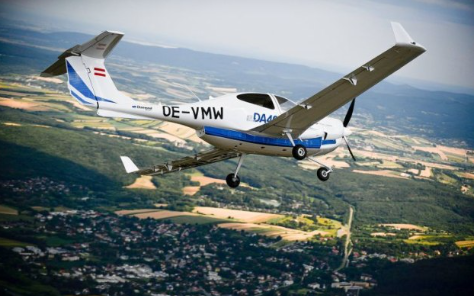
Electric aviation received a boost in Europe last week as the GENERAL AVIATION MANUFACTURERS ASSOCIATION (GAMA) released a white paper roadmap to accelerate de-carbonising aviation, and Diamond Aircraft and Lufthansa announced the results of training tests using the electric eDA40.
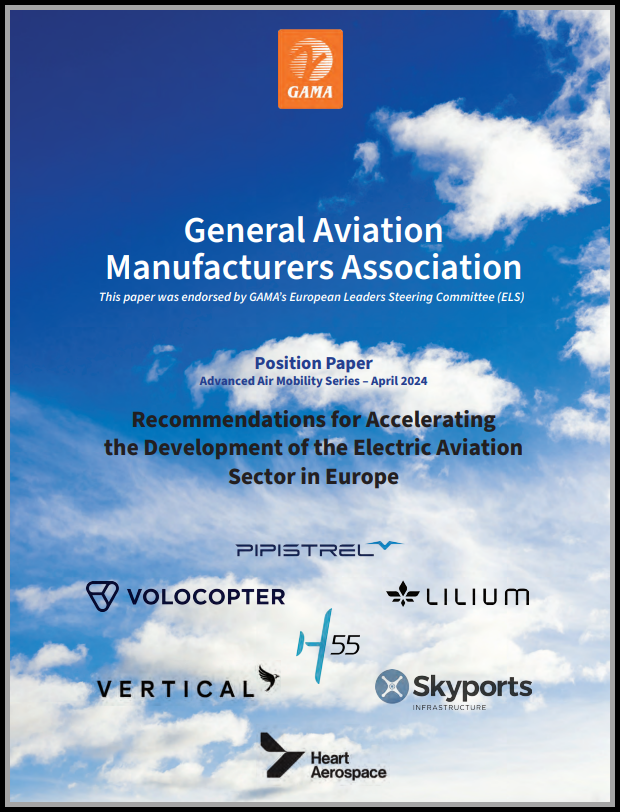
GAMA’s paper Recommendations for Accelerating the Development of the Electric Aviation Sector in Europe delivers several major recommendations the association believes would need to be put in place for the industry to reach to goal of zero carbon emissions by 2050.
“GENERAL AVIATION is at the forefront of developing and introducing INNOVATIVE TECHNOLOGIES that will transform the entire aviation industry,” said KYLE MARTIN, GAMA Vice President European Affairs.

“We look forward to furthering our ongoing work with the European Commission and EASA so that they have a fuller understanding of the vital role that they will play in advancing this sector, which is the INCUBATOR FOR SAFETY, SUSTAINABILITY AND INNOVATION.”
Among the recommendations GAMA promotes in the paper are:
- strengthening and broadening the scope and the accessibility of existing funding programs that could provide R&D and manufacturing funding to support for electric aviation innovation
- strengthening supply chains and preparing for battery recycling
- strengthening electricity infrastructure and grid capacity
- revising the EU State Aid rules so that Member States can develop new technology-neutral programs specifically tailored to the missions of high-potential and high-risk deep-tech companies
- revising the European Investment Bank transport lending policy to include support for low-carbon aviation technologies, including hybrid-electric aircraft as well as dedicated facilities for eVTOLs.
“The paper builds upon GAMA’s efforts advocating for key policy and legislative measures needed to accelerate the development of electric aviation in Europe,” a GAMA announcement says.
“It highlights the need for creating and strengthening appropriate funding frameworks, building a robust and resilient supply chain and fostering the appropriate regulatory and policy environment to support the emergence and success of the electric aviation industry.
“Providing EASA with the critical resources and budgetary support it needs to support the certification process is also one of the key recommendations of the sector.”
Furthering the cause of electric aviation in Europe, Diamond Aircraft and Lufthansa Aviation Training (LAT) conducted an series of testing in early April that integrated an eDA40 into Lufthansa’s training program.
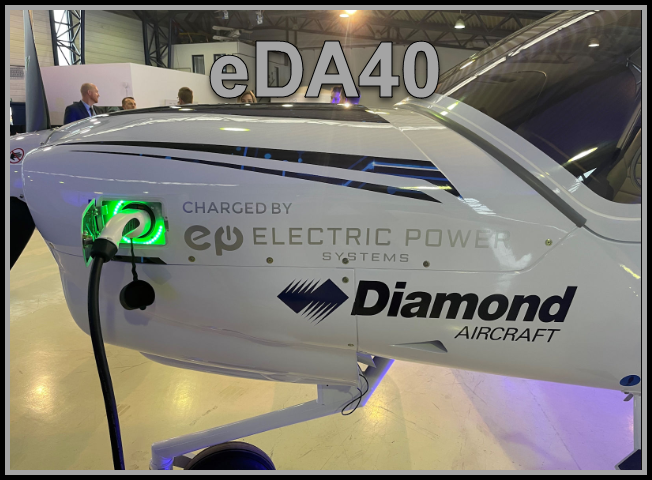
LAT used the aircraft on five flights involving four LAT pilots, working closely together with Diamond’s team of engineers and flight test pilots.
According to Diamond, LAT’s pilots were “astonished” how easy the aircraft is to operate and how similar it handles to the DA40 NG, at the same time remarking how quiet the eDA40 was inside the cockpit.
Diamond said the test revealed that the eDA40 seamlessly integrates into existing workflows, enhancing efficiency without disrupting established processes.
“The European Flight Academy, the flight school of Lufthansa Group, is not only dedicated to highest training standards but also commits itself to new approaches to foster sustainability in aviation,” said LAT CEO Matthias Spohr.
“We are delighted to be part of the eDA40 development process. It gives us a deep understanding of the new technology used and enables us to use it for the most advanced training.”
THE EUROPEAN UNION HAS SET TARGETS THAT AIM TO REDUCE CARBON EMISSIONS BY 55% FROM 1990 LEVELS BY 2030 AND ZERO BY 2050.
Australia has legislated targets of 43% below 2005 levels by 2030 and zero by 2050.
According to the Department of Climate Change, Energy, the Environment and Water [of Australia], aviation currently contributes 8% to the total carbon emissions attributed to transport operations.
Sustainable aviation is likely to be a prominent feature of the Federal Government’s Aviation White Paper, which is expected to be published in the middle of this year.

+++++++++++++++++++++